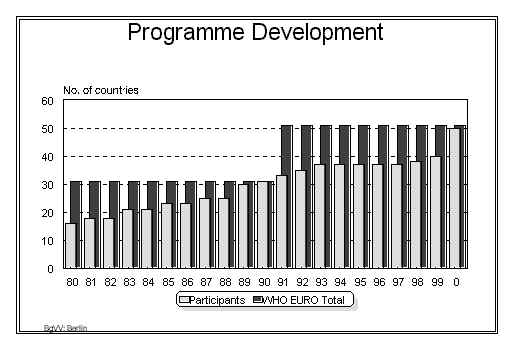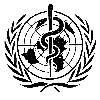|
|
WHO Surveillance Programme for Control of Foodborne Infections and Intoxications in Europe |
BfR |
8th Report 1999-2000 |
||
|
|
||
Introduction |
||
The WHO Surveillance Programme for Control of Foodborne Diseases in Europe was launched in 1980 as a result of the international awareness of the socio-economical impacts of the increase of foodborne diseases. This Programme is managed by the German Federal Institute for Risk assessment (BfR), an FAO/WHO Collaborating Centre for Research and Training in Food Hygiene and Zoonoses under the responsibility of the Food Safety Programme of the WHO Regional Office for Europe.
The main objective of the Programme is to provide information for the development of appropriate measures for the prevention and control of foodborne diseases in the Region. Specific objectives include:
- the identification of the causes and epidemiology of foodborne diseases in Europe;
- the distribution of relevant information on surveillance; and,
- the collaboration with national authorities in the identification of priorities in the establishment or reinforcement of their systems of prevention and control of foodborne diseases.
Since its establishment in 1980, the interest in the Programme has grown continuously. The Programme started with the participation of eight countries and currently 51 of the 52 members of the WHO European Region are participating countries.

During year 2000, 10 new countries have joined the Programme including Armenia, Azerbaijan, Belarus, Georgia, Ukraine, Uzbekistan and the whole Balkan region. This year, Tajikistan has actively joined the Programme.
The Surveillance Programme has the support of the WHO Regional Office in Europe in the provision to the countries of technical assistance to reinforce their surveillance systems and to promote laboratory based surveillance. In fact, during the last two years the WHO Food Safety Programme in Europe has organized several food microbiology laboratory-training courses for example: in Moscow for several Russian speaking countries in collaboration with WHO Salm-Surv, in Kazakhstan for the central Asian republics and in Tajikistan for national experts from different oblasts. Additionally, the WHO/Europe Food Safety Programme has organized, in collaboration with the Center for Disease Control (CDC), one course on epidemiology of foodborne diseases and epidemiological investigation of foodborne outbreaks for the central Asian republics.
The WHO Surveillance Programme achieved remarkable accomplishments during the last 20 years, including harmonization of definitions and introduction of standardized codes or the development of an EPI-INFO questionnaire to investigate foodborne outbreaks. As a result, the Programme has been providing to risk assessors and risk managers in the Region essential data and information for hazard identification and trends analyses, and hence for the evaluation of control options.
The 8th Report summarizes the contributions from 50 countries of the WHO European Region for 1999-2000. This web-based version is preliminary and includes the country reports in English. Some of this country reports are still provisional, and the final versions will be placed in the next web update. The printed version of the 8th Report will be available early 2004. The introduction, summary and discussion will be translated into Russian.
Country reports include:
1. General information on the
surveillance systems in each country
2. Data from statutory notification
3. Information on epidemiologically investigated outbreaks
4. Additional information
The General information section includes a description of the official surveillance and reporting system in the corresponding country.
Statutory notification presents data from the official notification system in the countries. In a number of countries these data only refer to the number of cases notified to the health agencies with or without laboratory confirmation and without any further epidemiological background information.
The section on epidemiologically investigated outbreaks includes information on:
- number of affected people;
- causal agents;
- incriminated foods;
- place where food was contaminated or acquired or consumed and;
factors contributing to the outbreak.
This information is frequently based on the reports of laboratories involved in the investigation of foodborne incidents.
Finally, the section of additional information may include comments from the national contact points and - when available - links to the participating countries’ related web sites with information on actual figures or trends in foodborne diseases.
With this web-based version we invite all our national contacts to send us their comments on the provisional versions to enhance the final printed version of the 8th Report.
The editors and the WHO Food Safety Programme of WHO/Europe would like to express their deep gratitude to all the national counterparts of the WHO Surveillance Programme for their invaluable contributions, and to all those who collaborated in the elaboration of the 8th Report and its placement on the web for their support in completing this important task.
This page was created 12 December 2003.
© BfR - FAO/WHO Collaborating Centre for Research and Training in Food Hygiene and
Zoonoses
webmaster@who.it
